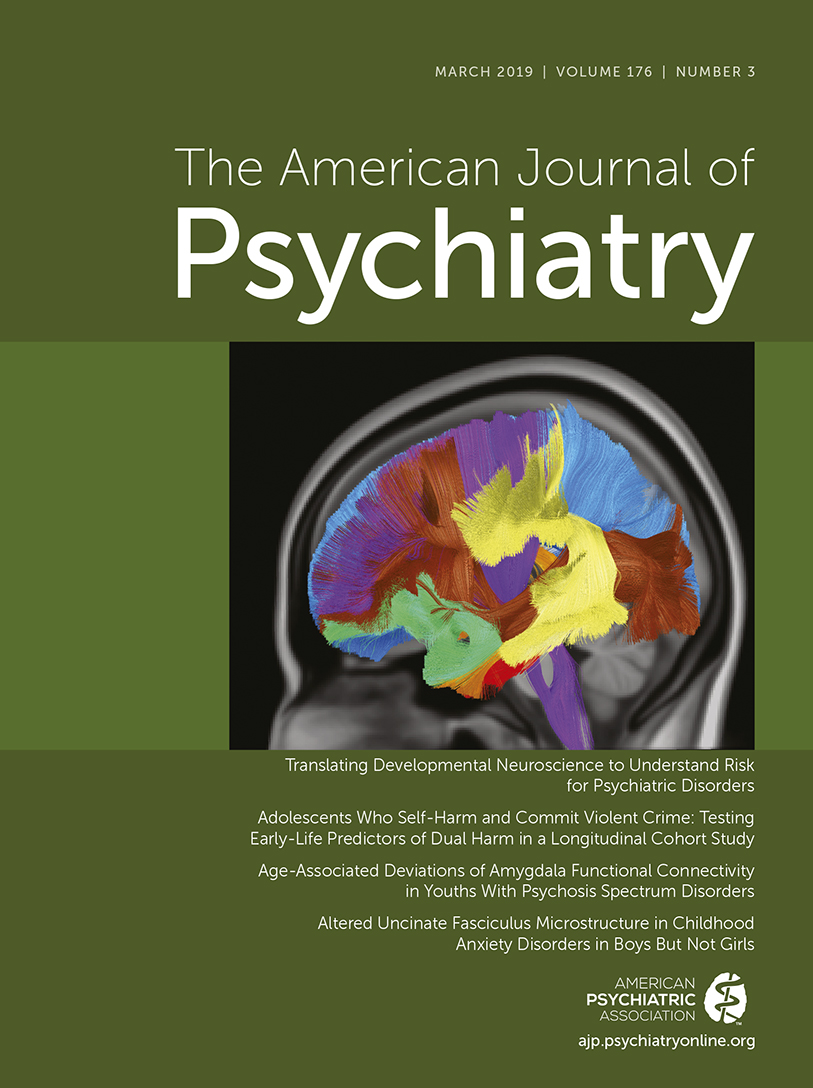Adolescents Who Self-Harm and Commit Violent Crime: Testing Early-Life Predictors of Dual Harm in a Longitudinal Cohort Study
Abstract
Objective:
Self-harm is associated with violent offending. However, little is known about young people who engage in “dual-harm” behavior. The authors investigated antecedents, clinical features, and life characteristics distinguishing dual-harming adolescents from those who self-harm only.
Methods:
Participants were from the Environmental Risk (E-Risk) Longitudinal Twin Study, a nationally representative U.K. cohort of 2,232 twins born in 1994 and 1995. Self-harm in adolescence was assessed through interviews at age 18. Violent offending was assessed using a computer questionnaire at age 18 and police records through age 22. Risk factors were assessed between ages 5 and 12. Adolescent mental health, victimization, personality functioning, and use of support services were measured at age 18.
Results:
Self-harm was associated with violent crime (odds ratio=3.50, 95% CI=2.61–4.70), even after accounting for familial risk factors. Dual harmers had been victims of violence from childhood and exhibited lower childhood self-control and lower childhood IQ than self-only harmers. Dual harmers experienced higher rates of concurrent psychotic symptoms and substance dependence. They also exhibited distinct personality styles characterized by resistance to change and by emotional and interpersonal lability. However, dual harmers were not more likely than self-only harmers to have contact with mental health services.
Conclusions:
Dual harmers have self-control difficulties and are immersed in violence from a young age. A treatment- rather than punishment-oriented approach is indicated to meet these individuals’ needs. Connecting self-harming adolescents with delinquency-reduction programs and transdiagnostic approaches that target self-regulation may reduce harmful behaviors. Preventing childhood maltreatment and implementing strategies to reduce victimization exposure could mitigate risk for both internalized and externalized violence.



